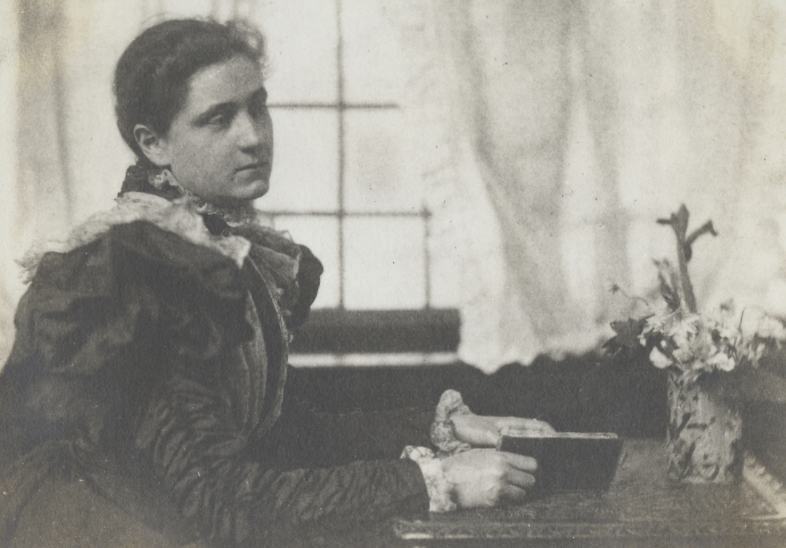The Hidden Legacy of May Morris
/On the second floor of the Jane Addams Hull-House Museum is Jane Addams’ bedroom. Many elements of the space have been fashioned to evoke how it may have looked when Ms. Addams was still alive. Several original furniture pieces reside in the room, but perhaps what stands out the most is the striking design on the walls. This design is titled Honeysuckle II, produced by Morris and Co., a popular furnishings and home décor company.
For many decades, it was believed that the design had been created by William Morris, a renowned textile artist, writer, and Socialist activist. William Morris was one of the most prominent figures within the Arts and Crafts movement, which had begun in the mid-1800s and was formed as a means of opposition to the growth of industrial manufacturing. Members of the Arts and Crafts movement believed that the rise of industry exploited workers both in terms of financial compensation and agency in the act of crafting goods used in one’s home and everyday life. They believed that mass production took away the artistry of hand-crafted production, so much of their efforts involved the preservation of traditional craftsmanship and artisan work. Hull-House co-founder Ellen Gates Starr was a devoted member of the movement – she was a master bookbinder and worked with other members throughout the United States and Europe. All of the buildings in the Hull-House Settlement complex, except for the original Hull-Home, were designed by Allen and Irving Pond (known as the Pond brothers) in the Arts and Crafts style.
In recent years, it has been discovered that many designs attributed to William Morris were actually created by his daughter, May Morris (1862-1938). May grew up in a family that centered much of its time on cultivating artistic and crafting skills. She learned to embroider and create designs from a young age. In 1885, at the age of just 23 years old, May became the director of the Morris and Co. embroidery department, and headed it until 1896, when her father passed away. She created many of her most iconic designs during this period, primarily inspired by plants and nature, but it was often the case that people had no idea they were hers.
Image: Jane Addams bedroom at Hull-House, during a museum tour in 2017. A Morris and co. wallpaper design is on the walls.
In addition to being an influential artist, May Morris was also a staunch advocate for labor rights. As she became more aware of the unfair wages paid to artisans, especially women, she became more involved in reform work and Socialist circles. In 1907 she helped found the Women’s Guild of Arts in response to the Art Workers Guild’s refusal to allow women to join. May taught at art schools in London from the 1890s to 1910 and compiled and published her father’s extensive writing after his death. In late 1909, she embarked on a lecture tour in the United States that included a month-long stay at Hull-House.
May Morris was married to fellow Socialist Henry Halliday Sparling in 1890, but their marriage was tumultuous, and they divorced in 1898. She also had an on-again, off-again relationship with playwright and activist George Bernard Shaw that lasted about 15 years. In 1917, while living at her family’s manor in Kelmscott, England, she met Mary Lobb, with whom she shared a love of nature and animals. Lobb moved into Morris’ manor not long after as her gardener and became her companion for the remainder of her life. As an agricultural worker, Lobb was known for her strength and physical ability; she was often described as masculine and wore men’s clothes most of the time. Lobb considered herself a protector to Morris, to the point of sleeping in Morris’ room with a shotgun at her side. They traveled together throughout Europe (including multiple trips to Iceland when Morris was nearly in her 70s). Morris never had any children, but she did care for and support her younger sister, Jenny, who suffered from severe epilepsy along with other health complications. Morris died in Kelmscott in 1938 at the age of 76.
Read more about May Morris and see more of her work at the links below:
The Royal Academy of Arts - Feminist, socialist, embroiderer: the untold story of May Morris
Art Institute of Chicago - May Morris: Designer and Advocate
The Brooklyn Refinery: May Morris
”The Reluctant Reformer: May Morris’ United States Lecture Tour of 1909-1910”




